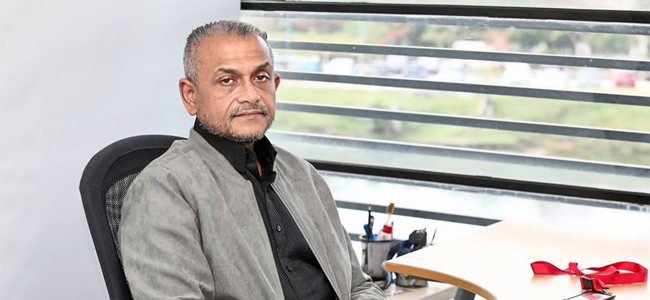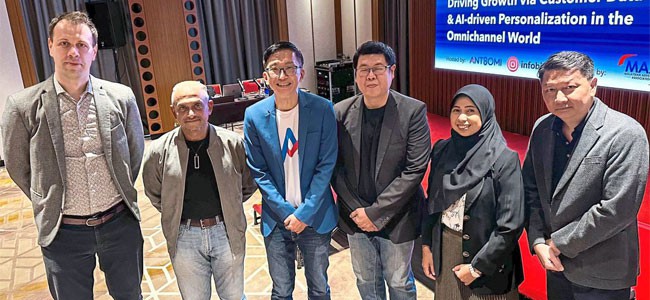VERY rarely does any speech at a conference shake the tech, marketing and media worlds simultaneously. But two weeks ago, the chief marketing officer of the world’s largest global advertiser did exactly that.
US-based Procter & Gamble Co (P&G) chief brand officer Marc Pritchard last week urged all fellow marketers to get tougher on transparency and “stop giving digital media a pass”. He announced landmark changes in the way P&G would address agencies, contracts, measurements, fraud and even Google and Facebook in 2017.

The new rules which P&G has scheduled to be fully in place by year-end include requiring 100% of media funds to be used for payments to media publishers only, and no other investments, floats or other activities not visible to the advertiser. All rebates, at the same time, should be disclosed and returned and all media transactions will be subjected to audit.
Another is the endorsement by P&G of the controversial US-based Media Rating Council (MRC) viewability standards for digital media. It defines a viewable impression as requiring a minimum of 50% of pixels in view for one consecutive second for display and two consecutive seconds for video.
With these and other digital marketing debates grabbing headlines this past month, the Malaysian Advertisers Association (MAA) which includes some of the country’s most influential digital marketers provided StarBizWeek exclusivity of their views to help chief marketing officers and marketing leaders in Malaysia better understand the transparency challenges Pritchard criticised in his landmark speech.

On rebates, kickbacks and other non-fee based profits from media buying
According to the 2016 Association of National Advertisers (ANA) report on media agency remuneration, there are controversial practices which are now “pervasive” in the US. These include, for example, not passing on to their clients cash rebates earned from media spends, or accepting rebates-in-kind in terms of free media inventory credits, or even hidden rebates in the form “service agreements” when media agencies hide rebates by charging media suppliers for so-called research or consulting projects.
On the issue of pervasiveness of rebates and non-fee based profits from media buying and what more should be done to address it, Heineken Malaysia marketing director Maud Meijboom-van Wel says this topic is a concern for Heineken as agency trust and transparency is a key component to a healthy agency relationship.
“Heineken worldwide was very close to the ANA 2016 report in the US, and has worked with the consultants who conducted the research and wrote the report (K2, Ebiquity and Firm Decisions) to build the structure around our agency agreements that eliminates, as best as possible, the loop holes that allow for rebates and savings. Secondly, we, as many other advertisers do, audit our media buying, which our agencies are comfortable with, and if anything, has improved the relationship overall”.

DQ&A executive director for Asia Tom Van den Berckt, on the other hand, feels it is near impossible to achieve transparency using contract clauses.
“Every tier one advertiser should consider taking trading in-house (eventually) or at least own the trading desk and let agencies use it”, he says. DQ&A is a provider of digital campaign technology and management for advertisers.
Digi head of marketing services Chan May Ling says brands know programmatic solutions are growing and worth investing in but to avoid all these transparency issues, many brands are opting to insource instead.
“This is especially true for some categories where the brand sits on useful amounts of customer data. However, this needs to be approached carefully and there has to be a huge appetite for platform investments and building new skill sets to optimise spends and also integrating with third party publisher data are no easy tasks,’’ she adds.

On hidden markups in digital media
Maxis head of marketing Sulin Lau also raised the issue of opaqueness in cost when it comes to programmatic media: “Hidden markups have been a long-running media buying concern, however the sheer complexity of programmatic media ecosystems and real-time media auctions mean that advertiser dollars pass through many more hands than before – agency AORs, specialist trading desks, exchanges, resellers, etc. Each taking a slice of the media spend before it ever reaches the end-publisher.
“Given these many middle-men, every brand which is heavily invested in digital today should be asking themselves is programmatic media still worth investing in? Or do these added headaches negate most of the much-lauded performance-to-cost advantages of buying digital media programmatically?”
Commenting on this point, Maud notes that in order to remove the opaqueness within the programmatic world, Heineken has focused on building direct, global relationships with its key tech partners in the programmatic space, prioritising vendors that have a transparent model and building global relationships with them.
Until there is a universal approach or body to tackle this issue, AirAsia Bhd head of commercial Spencer Lee opines the best immediate solution is to ensure that agencies are transparent with their buy and allow access to buying platforms to advertisers.
“It is important for advertisers to not only get the bird’s eye view on digital spend, but also the worm’s eye view on the targeting, placements, performance, etc,’’ Lee says.
Digital advertising fraud is now pervasive
As ad fraud is increasingly a concern, how does a large digital spender protect the integrity of its digital ad spend against outright fraud in the form of botnets, ad-stacking and other fraud variations?
Towards this end, Chan says Digi uses a third party tracker to standardise reporting and tracking of all its digital buys. The best way to verify publishers data is by using a third party tracker that give us additional data which publishers can’t provide such as viewability, post click and post impressions conversions, she explains.
Air Asia, Lee says, uses a two-pronged approach to reduce ad fraud as much as it can. In addition to the automated campaign tracking, it is also done manually. “We use verification tools like Integral Ad Science & Double verify to protect our programmatic campaigns. On the other hand, our in house team manually maintains a white list of sites that works for us and gives us high visibility, and a blacklist sites that gives us low or poor viewability or performance.
“The team also monitors a comprehensive list of sites which our ads appear in and take note of publishers with abnormal performance. Most of the markets/countries that we advertise are unique. We do however have an internal viewability benchmark that we try to achieve for our branding campaigns,’’ he says.
Van den Berckt, however, does not think fraud is “bigger” than before as there’s just a lot more spending in digital today. “Fraud also tends to be higher on the newer forms of digital like mobile and video. On search, fraud is hardly a topic any more. It helps that search is dominated by one provider that has the ability to detect and prevent fraud,” he adds.
Trusting Google and Facebook to self-report on ad performance
Sulin thought the single boldest announcement in Pritchard’s speech was P&G’s dissatisfaction with the closed ad measurement systems of Google & Facebook that forces every advertiser to trust Google and Facebook to provide reports on how well ads perform within their platform. “Every advertiser in the world currently trusts Google and FB to self-report on ad performance. Whether we like this or not, no large advertiser is genuinely prepared to zero-rize all spending on the two largest digital media platforms. What’s more important than third party verification on ads is to stop relying solely on ad performance reports, and to take ownership for measurement back from the agencies and publishers. All advertisers will need to develop their own digital brand and business goal performance measurement systems as a check and balance. Our digital display buys are evaluated not on CTRs or CPCs but Cost per transactions/actions outside of the media platforms.”
Lee adds this is indeed a very bold move and the fact that it came from one of the biggest advertisers will make us think twice. “Facebook announced there was an error in their video views as well as reach last year. This goes to show that we should not trust the numbers fully. Nonetheless, I applaud them for admitting the error,’’ he notes.
Maud says as a matter of principle, Heineken “cannot allow vendors to grade their own homework. It’s just bad business. We believe healthy relationships are built around earned trust, with checks and guard rails which are established beforehand,’’ she adds.
Van den Berckt notes that it is always an advertiser’s duty to question and verify. Blind trust seldom ends well, but neither does excessive paranoia, he says.
“Advertising revenue is the bread and butter of both Facebook and Google. They have every incentive to make advertisers happy. FB’s disclosure last year that they had calculated some metrics incorrectly should not be seen as proof of fraud, but welcomed as a sign of transparency and accountability. Fraud is much more likely to happen on second and third tier platforms.”
*Source from The Star – 18th February 2017



